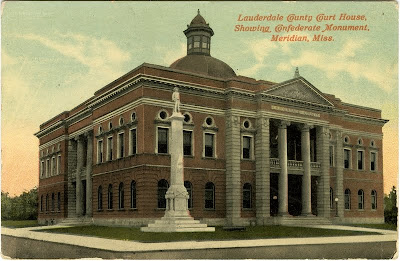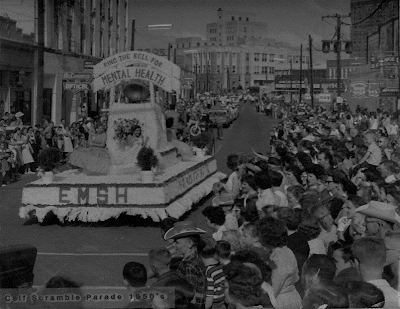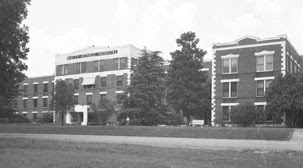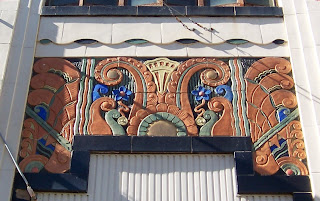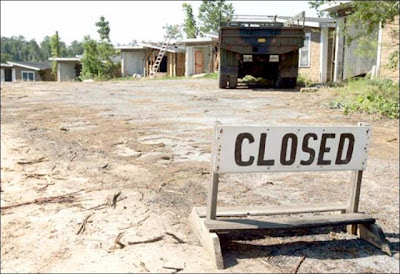
History of the Triangle Restaurant and the
Chik-Steak Sandwich
Most people in Meridian during the decade of the 1930s - the era of the Great Depression – have memories filled with "hard times and little money."
Instead of joining the "down-and-out" crowd, one Meridian couple, Glen and Lillian Phipps, seized upon the time as one of opportunity. The result was that they established a name in the city that would last for years yet to come. The Triangle with its Chik-Steak and Dutch apple pie enjoyed the status of a household word for almost forty years.
It all started during the bleak days of 1931 when the Phipps opened their first restaurant at the corner of Seventh Street and 39th Avenue in what had previously been an automobile battery shop. From 10 AM til midnight they tried to entice enough customers to make a profit at their new venture, but business did not come their way.
Deciding they needed a business within walking distance of downtown trade the Phipps moved in a matter of months to a small vacant restaurant behind Klein's Grocery at Seventh Street and 23rd Avenue. With only a counter and eight stools, Glen decided to increase the seating capacity by four booths. They named it the Triangle Restaurant from the shape of the block and they were ready for business.
Money was scarce during the early '30s. A nickel had to go a long way. Trying to help his customers stretch their nickels led Glen Phipps to search for a five-cent sandwich that would fill. He started off with a piece pork loin, wrapped it in a flour and egg batter and fried it in deep fat, placed his product in a bun with ketchup and a slice of dill pickle, thus was the first Chik-Steak born.
His wife, Lillian, gave it its name from the batter resembling that used for frying chicken and the piece of meat looking much like a small steak.
William Carroll Brookshire – a member of the ice cream making family -enjoyed the distinction of buying the first Chik-Steak, at the suggestion of Glen Phipps. According to the story, Brookshire liked the first one, so he ordered a second. Upon his return to the ice cream plant – about a block away - he told one of the employees of the new taste treat. Whereupon the employee headed for the Triangle and ordered two, not one, of what would become Meridian's five-cent eating sensation.
The Triangle Restaurant and the Chik-Steak became one and synonymous, but there were some growing pains. Glen found he couldn't make a profit because of burning so much of the deep fat in which his sandwich was fried. He then heard of the electric fryer with controlled heat. He promptly went to the Mississippi Power Company, which ordered the Triangle the first electric fryer to come to Meridian.
Then there was the day a customer complained to a car hop that the nickel Chik-Steak was too small for his appetite. The car hop reported that to Phipps who thereupon cooked one twice as large for the customer. Thus was born the Jumbo Chik-Steak which sold for ten cents.
Many Meridianites will also remember other Triangle specialties. There was the aforementioned Dutch apple pie for 10 cents, with cheese for 15 cents. Other Depression favorites included a plate lunch with half a fried chicken for 35 cents.
Not ones to stand still, the Phipps enlarged their restaurant, making the main floor larger and adding a balcony. Eventually, when Klein's Grocery closed, the Triangle moved into that space and changed its entrance to face 23rd Avenue across from the World War I monument.
As financial woes eased, their trade increased. By the time of the late '30s and the early '40s and the opening of Camp Shelby, the Triangle had developed beyond the city's borders. Many a soldier passing through had to stop for a Chik-Steak with all the trimmings.
Back in 1936 the owners of the Triangle had opened a new drive-in restaurant on Eighth Street between 44th and 45th Avenues. They introduced another item that developed a popularity of its own, the five cent malt served in a frosted glass – and the frosted malt was born. Beside their drive-in they built the city's only open-air dance pavilion, complete with a juke box. During the summer other customers sat at nearby tables and feasted on ice-cold watermelon as they watched the dancers. This was the era of the jitterbug with all its athletic antics.
Chik-Steak, the sandwich that first brought the Triangle acclaim, began as a pork tenderloin, but was later made primarily of baby beef. And its popularity continued to grow. To protect his culinary masterpiece, Glen Phipps had its name copyrighted. He sold the copyright to two firms on the Mississippi Gulf Coast, but it never enjoyed the popularity there that it had in the Meridian area.
Mrs. Lillian Phipps, in an interview with the writer, was obviously proud of their unique eating sensation of the Depression era. She, however, was quick to add that much of the success of the Triangle could be attributed to hard work, and that many 12 ad 14 hours days were spent by her and her husband in their restaurant.
Glen Phipps died in 1958. The Triangle continued its popularity under
Mrs. Phipps for another 11 years. In 1969 when her lease came up for another five-year renewal, Mrs. Phipps decided that it was time to leave the restaurant business to the younger generation. For her, it was time for retirement.
Written by Jack Shank, appearing in the Meridian Star March 31, 1985
Mrs. Phipps died May 7, 1998 at the age of 88.

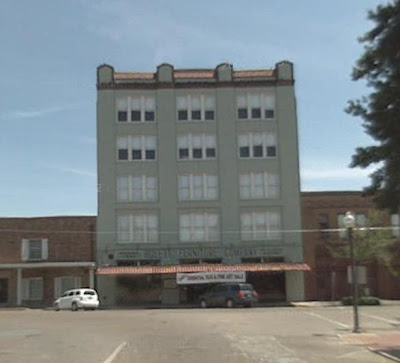

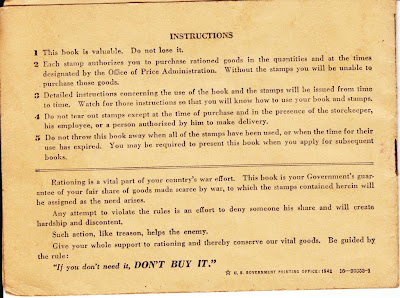

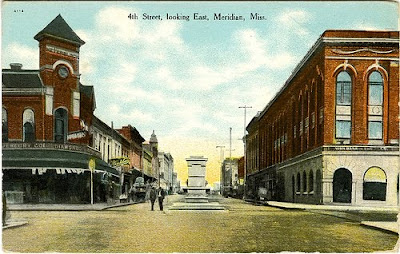

 NATIONAL REGISTER OF HISTORIC PLACES - 1979
NATIONAL REGISTER OF HISTORIC PLACES - 1979